La Formula E it is more and more popular: you want to follow it for the first time but you don't know it? Or are you an occasional spectator who doesn't have a clear idea of the rules? Here then is the complete guide to Formula E: how the cars are made, the tracks, how the race weekends are structured, the most important teams and drivers and the references where to look at one of the fastest growing categories in the world automotive scene. Are you ready to get to know the fastest electric single-seaters in the world?
What is Formula E? It has been in the "Queen of electric" category for 6 years
Formula E (its full name is ABB FIA Formula E World Championship) and the first fully electric engine category made with the support of the FIA, the International Automobile Federation. As reported by the Formula E website itself, the idea of the category was born during a dinner that took place in March 2011 in Paris between Jean Todt, President of the FIA, the then President of the European Parliament, Antonio Tajani, and Alexander Agag, true deus ex machina of the category.
The Spanish entrepreneur, for years in the world of Formula 1, first as a distributor of the Regina Class on TV in Spain and then owner of Barwa Addax, a GP2 team. But Agag wanted Do more: create a category of fully electric single-seaters, which raced in center of the most important cities in the world and promoted a different show, more sustainable and with zero local emissions, for sponsor alternative and clean energies.
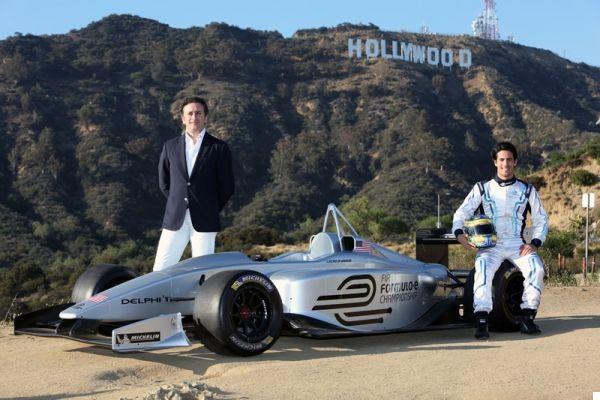
From this dinner, Agag with his experience as an entrepreneur and television broadcaster took up the challenge, became CEO of Formula E Holdings and began testing the first 100% electric single-seater cars. Testing began in late 2011, and in 2014 the first FIA Formula E Championship was born. From the first, embryonic season, 7 years have passed. After an ever wider public and media approval, Formula E celebrates a great milestone this year: for the first time, in fact, since the 2021 season it has become the "World Championship", confirming its status as "Queen class of electric“, Alter ego of the thermal“ Queen Class ”, Formula 1.
The Formula E cars, the Gen2: produced by Spark, with unique engines and batteries by McLaren
So this is the birth of Formula E. Le auto however, they are very different from those that debuted in 2014. The single-seaters used in the 2021 Formula E season are in fact known as Gen2 second generation of very high performance electric cars. The cars used in the championship are the Spark SRT_05e, and I'm a frame and battery level equal to each other.
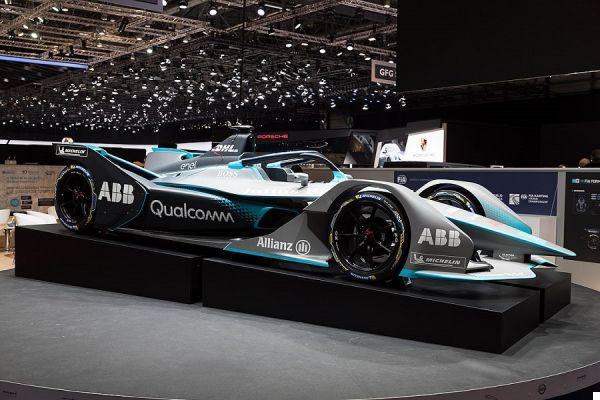
The frame and suspension are made by Spark Racing Technology, French house that, in collaboration with the Italian Dallara, is the sole supplier of the frames for the entire Formula E grid. For Formula 1 fans, there is a very nice detail behind the Spark: it is in fact founded and owned by the Engineer Frederic Vasseur, Team Principal of Alfa Romeo Racing Sauber, the Italian-Swiss team of Kimi Raikkonen and Antonio Giovinazzi in Formula 1.
The cars are really huge: they measure in fact 5,16 meters in length, they are 1 meter and 77 wide and only 1,05 meters high. For comparison, the Formula E Gen2s are about ten centimeters larger than today's huge Formula 1 cars, longer than a Mercedes S-Class. The frame is made of carbon fiber, while the suspensions they are made specifically for use in Formula E. They are indeed definitely more resistant of the classic single-seaters. Because? The road asphalt on which these cars run is in fact that of the city centers, decidedly more bumpy, pockmarked and bumpy than the permanent circuits around the world.
The 56 kWh battery, made by McLaren, weighs 385 kg
The battery pack instead is produced by McLaren Applied Technologies, a branch of the British car manufacturer, historic Formula 1 racing team, created itogether with Sony and the American company Lucid Motors. The battery has a capacity definitely generous, but in the race it is "Limited" to 56 kWh to standardize the competition. The autonomy is enough to get to the end of the race, eliminating those ugly car changes in the middle of the race, indispensable in the first seasons of Formula E. Even i brakes they are the same for everyone, and bring a bit of Italian style with the excellence of the Bergamo area Brembo.

The battery not only gives energy to the engine and allows the cars to push throughout the race, but also impacts, as can be guessed, the car body. The weight of a Formula E car stands at 900 kg with driver on board. Within this "package", the battery weighs approximately 385 kg, obviously positioned at the bottom. This significantly lowers the car's already low center of gravity, and gives it excellent stability.
The aesthetics: tires derived from the series and faired wheels
Aesthetically the cars have very conspicuous fairings on both the front and rear wheels, and do not have a real rear wing. Because? First of all, this futuristic aesthetic makes these cars very recognizable and distinct from the "classic" single-seaters. Then there are two technical reasons. The fairing bumpers prevent to cars, as far as possible, of "Take flight" in case of accidents wheel to wheel, as often seen in Formula 1. Furthermore, the fairings and the absence of a huge rear wing reduce aerodynamic drag. The car cuts through the air better, so it has less downforce and grip when cornering, but at the same time maximizes efficiency and autonomy, gaining precious kilometers to get to the end of the race.
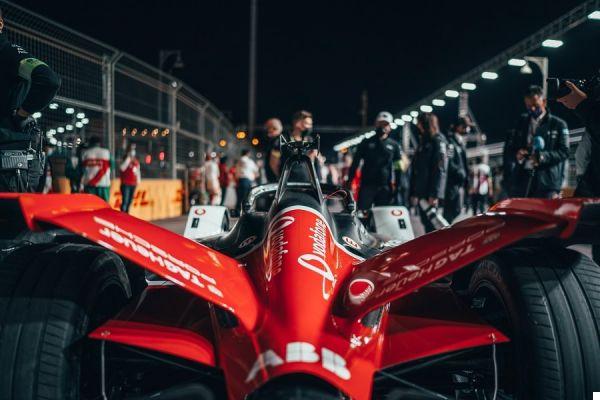
Le your shape of urethane, hidden by the large fairings, are very particular for the racing single-seater panorama. The wheels are in fact 18 inches and with carvings typical of production cars. The supplier is only Michelin, which in fact provides tires quite similar to road tires, even in the name: Pilot Sport EV. Then there is only one type of tire available: there are in fact no hard or soft compounds, no dry or wet tires. Tire trains are then limited for each car. In fact, each team has only two sets of front tires and two sets of rear tires for the entire race weekend.
The engine and performance: made by manufacturers, up to 340 hp and 0-100 in less than 3 seconds
Only the engine broadcast and performance of Formula E cars. In fact, the single-seaters differ precisely in terms of engine, gearbox and electronic management, hardware and software. These components are made directly by the houses which compete in the category, such as Audi, Mercedes, BMW, Porsche and so on.
The cars are equipped with a single engine that moves the rear wheels, and this cannot cost more than 250.000 euros. The total power is 250 kW, or 340 hp, but this is available under the right foot of the pilots only in practice and qualifying. In fact, “only” 200 kW of maximum power, or 270 HP, can be used in the race. This "drop" serves to preserve the battery, and to maximize autonomy. Speaking of which, spectators can see the percentage of the car battery from the official superimposed graphic during the race.
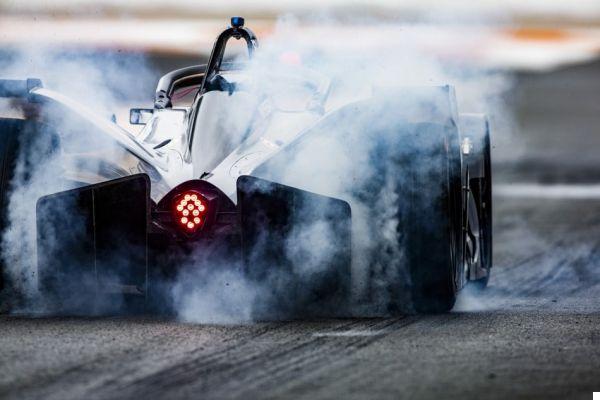
The performances are very interesting. Acceleration 0-100 km / h in qualifying configuration it is in fact covered in 2,8 seconds, having a maximum speed around 300 km / h. In street circuits, of course, these high speeds are not reached, but the potential to thrill, even without noise, is all there.
The race weekend: all condensed into a single day
Il race weekend it is similar to those seen in the most important automotive and motorcycle categories in the world. In fact there are in an event two free practice, qualifying and the race. There are small differences, however, and the most important is that everything takes place in one day. Taking place in the city center, in fact, in order not to clog a circuit and therefore block the main city arteries for a week, as happens in Formula 1 for example, the weekend is condensed into a single day of speed.
In fact, the day before the races there is one free pre-trial, called Shakedown. However, these are not official tests, they last a few minutes and the cars are not looking for performance. The Shakedown is used exclusively to check that everything is working properly, both mechanically and software. During the only official day of racing they are held in the morning two free practice sessions, one for 45 and the other for 30 minutes.

Tempers begin to heat up around noon with the qualifications, divided into two parts. In the first part, given the number of drivers (24) and the narrow circuits, they are formed 4 groups of 6 pilots: the composition of the groups is determined by the positions in the league. For example, the first 6 classified are in the first “heat, from the seventh to the twelfth classified are in the second and so on. Each rider within the groups has six minutes of “track time” to set the fastest time. Once all the riders of all groups have set their best time, the six fastest competitors go to compete in the SuperPole, or the super-qualification, a direct challenge for pole position.
During the SuperPole, the pilots go to the track one by one, with the sixth fastest starting first and so on. When the first driver crosses the finish line to start his own single fast lap, the fifth fastest in qualifying takes to the track and so on, up to the fastest in previous qualifying. At the end of the only attempt of the last SuperPole participant, the starting grid is obtained, and the fastest obviously gets pole position.
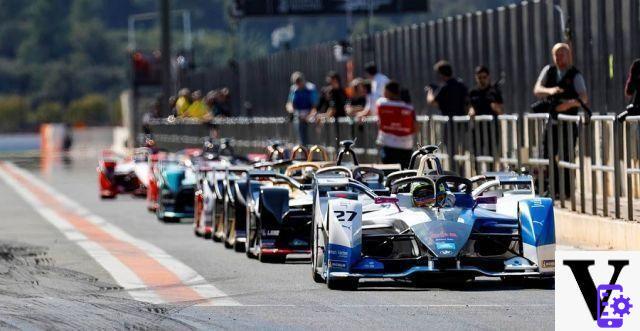
Given the complexity and challenge to which pilots are subjected, qualifying and SuperPole award world championship points. In fact, we speak of 1 point for the driver who scored the fastest time among all competitors in the qualifying groups, 3 points for the pole sitter, the pole position holder.
The rules of the E-Prix: 45 minutes, FanBoost and AttackMode
In the late afternoon it gets serious, with the actual Grand Prix. His name, of course, may not be Grand Prix, but it is E-Prix, the rules are also a bit different than in Formula 1. For starters, as in other categories there is no set number of laps, but a time: 45 minutes. Indeed, to be precise, the race lasts 45 minutes + one ride. In what sense? In practice, at the end of 45 minutes when the race leader crosses the finish line, the last lap begins, also indicated by the Formula E graphics. At the end of that “extra” lap, after 45 minutes, the race ends in a classic way.
About habits from other categories. There is no pit stop in Formula E, except for technical or mechanical problems. There is therefore no tire change or, of course, refueling. The race can be stopped with a red flag in case of serious problems, while in the event of a accident or a problem on the track there are two "tools" available to the judges: the classic Safety car, as in Formula 1, and the FCY, Full Course Yellow. Given the city and winding nature of the tracks and the danger of the safety operations of the circuit by the marshals, under the Full Course Yellow regime, or "Yellow flag on the whole track“, The cars insert the limiter at about 50 km / h, to neutralize the race.

For the rest, the race is almost normal, with however two great news for newbies, two “boosts” to the performance of the drivers on the track: the FanBoost e l'Attack mode. The FanBoost gives the chance for fans to give more power to their favorite. On the official Formula E website, on the official app or on social networks with the hashtag “#FanBoost” followed by #IlMioPilotaPreferito, fans can give more power during the race to the 5 most voted drivers. This extra horsepower of about forty horsepower can be used in the second part of the race for 5 seconds. How to vote for your favorite? You can vote from six days before the race up to 15 minutes before the start. The pilots who will have the FanBoost available will have the LED strip on the Halo on, to indicate to all spectators which pilots have FanBoost and who does not.
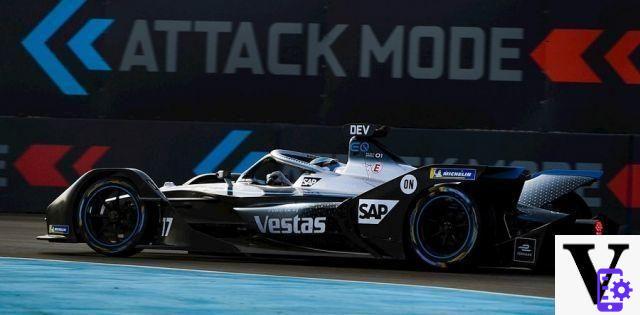
The second found is the Attack Mode, or 35 kW (about 50 hp) more obtainable by the pilots during the race. Like? In practice, in correspondence of one or two curves (it depends from circuit to circuit), there is one Dedicated “lane” outside the ideal trajectory. The riders therefore, to get this extra power, have to go through the curve with a much slower trajectory, thus risking being overtaken. The reward, however, is 50 HP more, for one total of 330, to be used 5 times from activation, and therefore have a considerable advantage on direct opponents.
Obviously, whoever finishes first wins, and the scoring system is the same as in Formula 1. We therefore have 10 points riders, with 25 points for the first classified, 18 for the second, 15 for the third, 12 for the fourth, 10 for the fifth and so on, up to the single point for the tenth classified. Finally, as in Formula 1, if a driver classified in the points area gets the fastest lap in the race, he takes home an additional point. Like this, in a race weekend the maximum is 30 points, obtainable by winning the race and obtaining the fastest lap in the qualifying heats, in SuperPole and in the race
The 12 Formula E teams: 9 manufacturers and three independents
We come to talk about stables and drivers. Given the technological challenge and the green soul of the competition, in Formula E there are 9 car manufacturers competing with their own team, making your own engine and gearbox. Then there are three independent teams, disconnected from the official manufacturers, with one of them making its own engine and gearbox independently.

Let's start with the reigning champions, the Franco-Chinese team DS Techeetah. The Sino-French team, made up of the DS car manufacturer of the Stellantis Group and the Chinese manufacturer Techeetah, present since 2016 after the acquisition of Team Aguri, is one of the most successful teams in the competition. I am indeed Reigning Champions Drivers and Constructors, with three consecutive drivers 'titles and two consecutive constructors' titles. For the team lead the French Jean-Èric Vergne and the Portuguese Antonio Félix Da Costa, reigning World Champion.
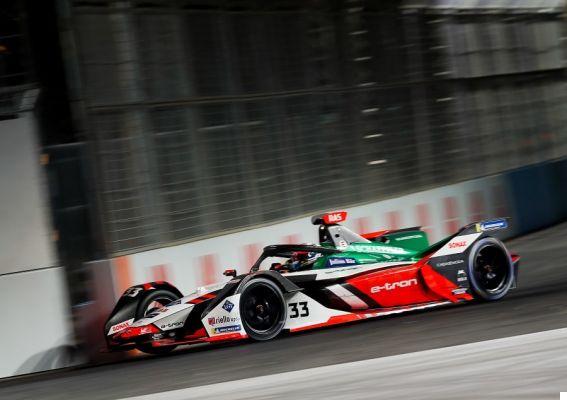
Going in alphabetical order, we find the Audi Sport DEPT, the racing team of the Ingostadt company. The team was born as ABT, the famous German trainer and computer, since the first season of Formula E in 2014, and in 2016 the House of the four rings decided to enter Formula E as an official team. Its pilots are German René Rast and Italian-Brazilian Lucas di Grassi.
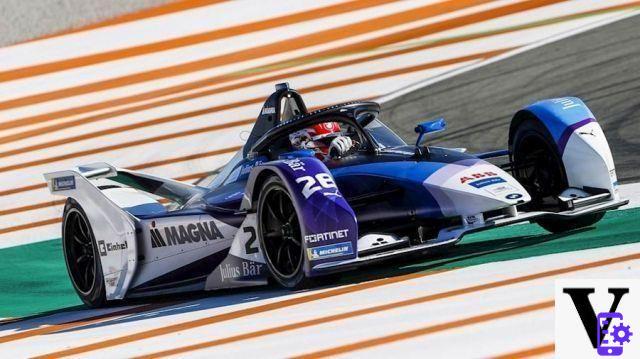
We stay in Germany for the BMW and Andretti Autosport. As can be guessed from the name, the House of Monaco joined the famous American team run by Michael Andretti, former Formula 1 driver and son of the legendary Mario Andretti, Formula 1 World Champion in 1979. Andretti Autosport has entered Formula E since the first season, obtaining several podiums, while BMW entered only two seasons ago, from the 2018-2019 season. Since she entered, however, the team has achieved 4 victories, and today the standard bearers of the American-German team are the English Jake dennis and the German Maximilian Günther.

We pass between the official teams at the Jaguar Racing, present in the Electric Circus since 2016. In the 50 races disputed the English team showed a great potential, obtaining 3 victories and several podiums over the 5 seasons played. After a disappointing 2020 season, 2021 has started well for Jaguar drivers, the New Zealander Mitch Evans, in the team since his debut, and the English Sam bird, arrived this year. The British driver himself won the last E-Prix disputed, Race 2 in Saudi Arabia. Could it be a good year for Jaguar?

We go to India to get to know Mahindra Racing. The team is also supported by the Italian Pininfarina: the famous Turin firm is in fact owned by Mahindra, and since 2014 they have participated in the maximum zero-emission category, where they have obtained 4 victories. Curiously, Mahindra is the only car manufacturer present in Formula E that has not yet produced an electric car. Its pilots are the British Alex lynn e Alexander sims.

We arrive at a name that knows how to be respected in single-seaters, Mercedes. The Mercedes-Benz EQ Team, however, he has only been in Formula E since last year, and has not yet established the dominant regime it has maintained in Formula 2014 since 1. Speaking of Formula 1, the two drivers of the team are two old acquaintances of the Queen Class, the Belgian Stoffel vandoorne and the F2 2019 Champion Nyck de vries. After a mixed start, Mercedes took their first win at the last race of 2020 with Vandoorne, and kicked off the season with a win at the first race with De Vries in Saudi Arabia.

Let's move on to the only Chinese manufacturer in the race, NIO. The Chinese manufacturer is still little known in Europe, but with its revolutionary ideas such as replaceable batteries it is surprising in the world of road cars. In Formula E, however, they have been present since the first season, and it is in the inaugural series that they have captured the first, and so far only, Drivers' Title with Nelson Piquet Jr. Since that moment, mixed results have hit the team, which this year tries to relaunch with the English at the wheel Oliver Turvey e Tom Blomqvist.

From China to Japan to get to know the team Nissan e.Dams. Those who know motorsport will have immediately recognized the famous team Dams, which has always been in orbit Renault. In fact, from 2014 to 2018 the team raced as Renault e.Dams, winning the first three Constructors' Championships, and the Drivers title in 2016 with Sébastien Buemi. Since 2018 the team has been renamed Nissan e.Dams, achieving a second place in 2020 as the best result, while the pilots are the Swiss veteran Sébastien Buemi the British Oliver Rowland.

Finally, the last official house is Porsche, which entered as Mercedes only last year, in 2020. The Zuffenhausen house found many difficulties in the first season, and despite a tally of two second places obtained by André Lotterer, it was unable to remain permanently in the first places in the first season. This year Porsche entrusts its 99x Electric to two Germans: André Lotterer, to the second season in Formula E, e Pascal Wehrlein.
The independent stables, from Venturi to Penske
We close the guide to the stables with the three independent Racing Teams racing in Formula E in 2021. Although costs are much lower than Formula 1, independent teams are the minority in this category. Either for the difficult logistics, or for the marketing interest that Formula E gives, these are the three “Cinderella” of the competition.

Let's start with the team Dragon Penske. The American team has been in Formula E since the beginning, and in the name it also bears the surname of its Team Principal, Jay Penske. A legendary name in racing: Jay is in fact the son of Roger Penske, founder of the homonymous Team Penske which has won in IndyCar for decades and which has also raced in Formula 1. The Dragon-Penske team has been in Formula E from the start, they have achieved two wins and the second final place in the debut season with Jerome d'Ambrosio, and is made in the engine and transmission house. This year, the bearers will be the Brazilian Sergio Sette Câmara and the Swiss Nico Müller.

Next we find the team Envision Virgin Racing. The English team was one of the first, in December 2013, to formalize its debut in the category, and after a rather long partnership with DS now uses Audi engines and transmissions. After getting well 11 wins in 6 years, this year the color bearers of Team Virgin are the Dutch Robin Frijns and the New Zealand Nick cassidy.
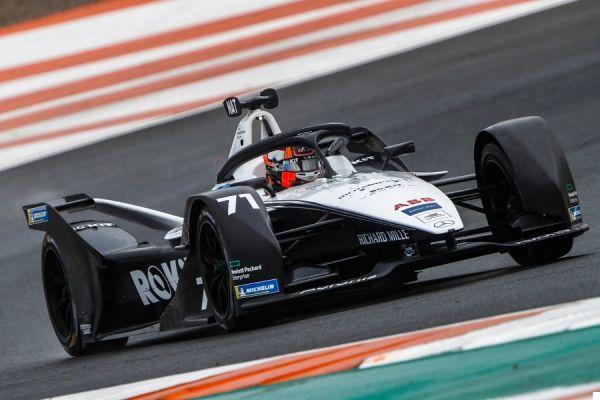
Finally, to close the 12 teams we have the Monegasque Venturi. This House, which has also tried several times to break through with road cars, uses Mercedes engines this year and has been present in Formula E since the debut of the category. After several years on the track, and the stay from 2018 to 2020 of Felipe Massa within the Team, he achieved only one victory in 2019, with the Italian-Swiss Edoardo Mortara, starting driver for the fourth consecutive season. At his side, in place of Felipe Massa, the Frenchman Norman Nato. Small curiosity: the Team Principal of the Venturi team is Susie wolff, ex-driver and wife of the Mercedes F1 Main Team, Toto Wolff.
The most famous drivers: between ex-Formula 1 and winners of the 24 Hours of Le Mans
As you have seen there are 24 drivers, all very talented, winning and fast. However, there are some competitors that we do not hesitate to call champions, champions. For example Jean-Èric Vergne. The 31-year-old Frenchman did very well in Formula 1 in Toro Rosso between 2012 and 2014, with excellent performances and good races. In 2015, however, he was "torpedoed" to make way for Carlos Sainz and a certain Max Verstappen ...
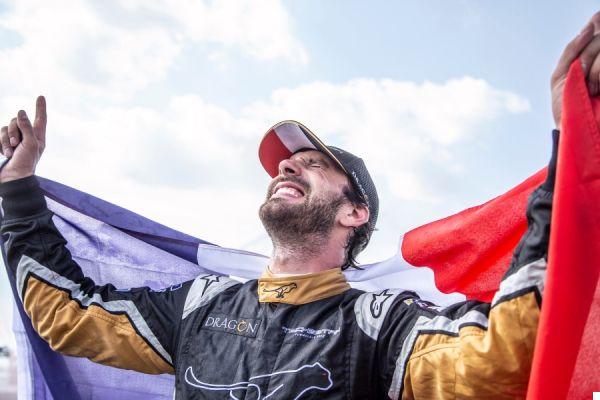
Very fast driver but also very underestimated in his period in F1, he has in fact won two consecutive championships in Formula E, in 2017-18 and in 2018-19. His teammate, Antonio Felix Da Costa, 30-year-old Portuguese, he raced in DTM and was a test driver for Red Bull in F1 in 2012. He has been racing since his first season in FE, where he finally managed to win the championship last year.
At Audi, on the other hand, it has been there since its debut Lucas Di Grassi. F1 driver with the forgettable Virgin in 2010, the Italian-Brazilian immediately entered the Formula E project in 2011, testing the prototypes until their debut in 2014. After 3 seasons always at the top, won the Formula E World Championship in 2017 with Audi. Di Grassi has never abandoned the 4 rings in recent years, conquering 10 GPs, 32 podiums, 2 second places and three final third places.
In Mercedes they run Stoffel vandoorne, Mercedes test driver, GP2 World Champion in 2015, and former Formula 1 driver from 2016 to 2018 with McLaren. At his side we find another GP2 World Champion, Nyck de vries. He won, convincingly, the propaedeutic category in 2019, ahead (and not a little) of Nicholas Latifi. Compared to the Canadian, Williams factory driver, he was left without a seat in F1 due to the absence of major sponsors. He therefore had to "settle" for Formula E, where at 25 he can really do well.

In Nissan there is the legendary Sébastien Buemi, 33-year-old Swiss of clear Italian origins. P.ilota in Toro Rosso from a very young age between 2009 and 2011, Buemi ha vinto the 24 Hours of Le Mans with Toyota three times in 2018, 2019 and 2020, and graduated Formula E world champion in 2016. It is to date the driver with the most victories in Formula E, with 13 first places.

Finally, in Porsche there are two "giants", two very strong Germans like Andrè Lotterer e Pascal Wehrlein. The first, almost 40 years old, he won the 24 Hours of Le Mans three times with Audi in 2011, 2012 and 2014, also winning the WEC in 2012. He has been racing in Formula E since 2017, first with Techetaah and then with Porsche since 2020, where he obtained 6 podi. In 2011 he won the Japanese SuperFormula and in 2014, after a decade of testing roles, debuts in F1 at 33 at Spa with the disappointing Caterham. He competes in only one GP, retires after just one lap, but impresses with his speed in qualifying. Sin.
Wehrlein on the other hand is a real broken promise, at the moment. Class '94 with origins from Mauritius, he raced in DTM in 2014 and 2015, becoming Champion in 2015, the youngest ever with his 21 years. In 2016 he raced with Manor in F1, obtaining excellent results for the scarce means at his disposal, including a point in Austria, the team's first point after the 2014 Monaco GP with Jules Bianchi, and in 2017 he raced with Sauber. With the arrival of Alfa Romeo in Sauber and Charles Leclerc in the team, he finds himself without a seat in Formula 1. At the same time, it also loses the support of Mercedes, of which he was a top pilot of the youth program, "Replaced" by George Russell. In Formula E from 2019 with Mahindra, this year he arrives in Porsche, hoping to finally shine.
The roll of honor of Formula E: 5 different winners in 6 seasons
Formula E is a very interesting championship also because in the 6 seasons so far it has always been unpredictable. In fact, in six seasons there have been 5 different World Champions.
The first Formula E World Champion was the Brazilian Nelson Piquet Jr. su NIO, in the 2014-15 season. It happened to him Sébastien Buemi in 2015-16 on Renault e.DamsWhile in 2016 17 the Italo-Brazilian has prevailed Lucas Di Grassi in an Audi ABT.
From 2017-18 to 2018-19 instead the reign of Vergne on Techeetah was established, the only bi-champion of the world (so far). Last year, however, after six grueling races in Berlin, he became champion Da Costa, on Techeetah. Who will be the next World Champion?
At the team level, however, there is more continuity. In the first three seasons, in fact, Renault e.Dams was three times Constructors' World Champion. After Audi Sport ABT brackets in 2017-18, the last two Championships were the prerogative of DS Techeetah, which will aim to reach the e.Dams record this year.
Formula E, the calendar: this week we run twice in Rome!
The 2021 Formula E calendar is still being defined. There should be 17 races scheduled for this season, to be played on 13 different tracks. For now, however, we have only reached official status for 6 stages and 10 races.
The Championship started in Saudi Arabia, on the Dir'iyya circuit, where a double header took place, i.e. two races on the same circuit. Likewise, Two E-Prix in Rome took place on the weekend of 10 and 11 April, in the city circuit of the EUR, as well as a Valencia e Santiago. Below you will find a table with dates and locations.
| Dir'iyya's E-Prix | Dir'iyya City Circuit | Saudi Arabia ?? | 26 and 27 February 2021 |
| E-Prix di Roma | City Circuit of the EUR | Italy ?? | And April 10 11 2021 |
| E-Prix of Valencia | Ricardo Tormo di Valencia Circuit | Spain ?? | And April 24 25 2021 |
| Monaco E-Prix | Monaco circuit | The principality of Monaco ?? | 8 Maggio 2021 |
| Marrakesh E-Prix | Circuit of Marrakesh | Morocco ?? | 22 Maggio 2021 |
| Santiago E-Prix | Circuit of Parque O'Higgins | Chile ?? | And June 5 6 2021 |
As you can see, after Rome there will be the Spanish E-Prix of Valencia. MotoGP fans, however, will have read a familiar name: Ricardo Tormo Circuit. In fact, the 2021 season will be the first to run an E-Prix on a permanent track. A solution taken also for the world health situation, but which will test the pilots in a terrain paradoxically unknown to them on these cars.
There are still to be formalized E-Prix of New York, Paris, Berlin, Seoul, London and Sanya, in China. The last one still in doubt is there'Mexico E-Prix, which you should run on Hermanos Rodriguez Circuit of Mexico City. In this case, Formula E would race on a track common to Formula 1.
Where to see Formula E: Sky and Mediaset share the rights
We close with a note of service for all those who want to follow Formula E already this weekend in Rome. Where to see Formula E? I Rights for the live broadcast of the Formula E races are shared by Sky and Mediaset. Rupert Murdock's UK pay TV will propose to its subscribers qualifications and races live on Sky Sport channel 1, including the two races of today and tomorrow Formula E. The comments will be made by Fabio Tavelli, Matteo Bobbi and Michela Cerruti, Formula E driver in the 2014-15 season.

Mediasetinstead, it offers the match live on Italy 1. To see free practice and qualifying, however, you can use the official website of Sport Mediaset. On the Mediaset networks, the comment is entrusted to Nicola Villani and Luca Filippi, with pre-race conducted by Ronny Mengo the pilot Vicky piria e Christine Sampaoli Zonca. To be always informed about schedules and schedules of the Italian channels, you can consult the official website of Formula E, which at this link will provide you with all the information you are looking for.
And you? Will you follow Formula E?
I would say that we have told you everything about Formula E. Now you have all the tools to be able to follow and appreciate it. What do you think, have we convinced you to follow it? Or do you still prefer the dear, ever-present Formula 1? Let us know in the comments and on our social channels!
 LEGO Speed Champions Formula E Panasonic Jaguar Racing...
LEGO Speed Champions Formula E Panasonic Jaguar Racing...
- Buildable kit with 2 replica Jaguar Formula E and I-PACE eTROPHY racing cars with realistic details, the gift ...
- Panasonic Formula E LEGO building models come with 2 minifigures in original racing suit and a ...
- LEGO Speed Champions cars are 25% larger; these Jaguar toy cars are great for display or for ...
 How to Build a Car: The Autobiography of the World’s...
How to Build a Car: The Autobiography of the World’s...
- Newey, Adrian (Author)


























